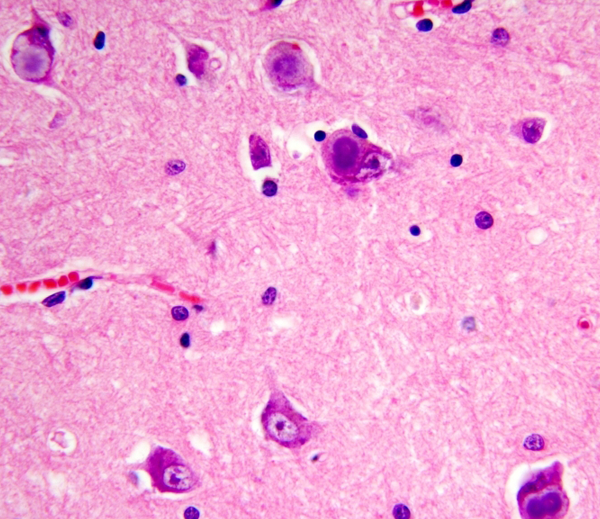About Lafora Disease

Lafora body disease is a metabolic storage disease. The Lafora bodies are the purple blobs in the neurons.
Lafora disease is the most severe form of human epilepsy. It is an inherited myoclonus epilepsy syndrome. Most cases of the rare disease are caused by mutations in one of two known genes: EMP2A and EMP2B. Both genes are located in chromosome 6. The gene EPM2A makes the protein called Laforin and the gene EPM2B makes the protein called Malin. A few cases of the disease are caused by an as-yet unidentified gene(s). The disease most commonly starts as epileptic seizures in adolescence. Rarely, it begins in 5 to 6-year-old children as a learning disorder. Lafora disease is reported worldwide, though there is a higher incidence of the disease in children of Middle Eastern, Southern European (Spain, France, and Italy), South Asian (India and Pakistan), and North African descent. The disease appears to affect males and females equally.
The extent of the disease is devastating. Although the child is born with Lafora, the disease typically does not manifest itself until adolescence. Children grow up normally, with no perceivable problems, until they begin to suffer from seizures. That is one of the cruelest things about Lafora. A seemingly healthy and well-developing child who has everything to live for is faced with nothing more than a “death sentence”.
You can read stories of Lafora disease patients to better understand the impact of this disease and why we want to reach a cure.
Therapy is primarily palliative and aimed at reducing seizures. From manifestation, which is normally the first seizure, a Lafora victim will die typically within ten years. Treatments are in the pipeline, but there is no cure.
Lafora Disease Symptoms
- Recurrent, Increasingly Intractable Seizures
- Cognitive Decline
- Ataxia (difficulty controlling muscles)
- Myoclonus
- Difficulty Walking
- Difficulty Eating
- Speech Difficulty
- Childhood dementia




